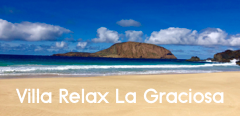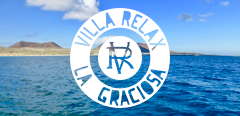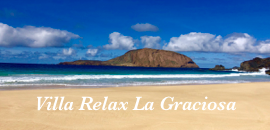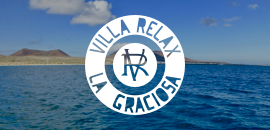Maspalomas in film
Multiple possibilities of the landscape of Maspalomas , in addition to the excellent weather prevailing throughout the year conditions, determined that this area of Gran Canaria has been the subject of attention from filmmakers , serving not only for different scenario documentaries, but also for several films. Sometimes this is part of the attempt , so often repeated and failed, to create in the Islands to consolidate a sufficient film industry infrastructure.
When filming documentaries or short films collected tirísticos and natural attractions of the island, Maspalomas will always be present. This applies, among others, Gran Canaria (1946 ), directed by Martin Moreno ; In the light of Gran Canaria (1955 ), directed by Christian Anwarder ; Atlantic Paradise ( 1965 ), directed by Juan Isasi ; Gran Canaria (1967 ), directed by Jerome Mihura ; etc . ( Morales Quintero , S. Et al. , 1997 ) .
The historical value of many of these and other productions elaboraaron in past decades , is very high, since we offer a very different view of the Islands of the current and finally disappeared . In this regard it is of special interest documentary , Paradise in the Atlantic , led by David J.Nieves correspondent news agency EFE and the NO -DO in the archipelago , and one of the most prolific filmmakers of the time. Produced and funded in 1965 by Alejandro del Castillo, Maspalomas Costa Canaria promoter project.
In him the details of this development are collected, with the beginnings of tourism in the south of Gran Canaria .
Already in the field of feature film productions , Maspalomas was the setting for some of the films that have had more resonance in the island society , particularly the Spanish-Italian coproduction Tirma , filmed throughout 1954.
Based on a play by Juan del Río Ayala , in her series of historical events are recreated around eventually Conquest of Gran Canaria. No embaargo , a script because of its many modifications managed to lose his original base , and would establish any historical rigor . But the fact it is a blockbuster, in which, under the direction of Paul Moffa worked stars like Silvana Pampanini , Gustavo Red or Marcello Mastroianni ; the theme of the film itself and the fact that many islanders participate in it as extras, determined to lift great expectation.
Pond , the palm grove and the dunes of Maspalomas were a natural setting in which several scenes from the movie were developed. This even proceeded to build a replica of the Castillo de la Luz on the edges of the pond , and he was also surrounded by shops Castilian camp. This definitely was one of the many historic invensiones of the film, such as military construction was not built until a few years after the conquest complete. Also would reach the southern waters replicas of Columbus’ ships, the chronological absurdity .
Also lacks credibility , contemplate Guayarmina Princess , starring Silvana Panpanini paper , riding through the palm , the back of a white horse . Moreover, with respect to these images, it seems at least unusual ” the giddiness with the characters , especially in the sequences of persecution riding, walking the thick pine Tamadaba for seconds later appear galloping through the exotic, and almost deserted , place Maspalomas dunes ” ( Déniz Cabrera , D., 1996:463 ) .
Precisely presence Pampanini canary lands , was a major event in Puritan island society of those years of national Catholicism . Which the Italian actress was in Maspalomas, sparked interest in visiting that part of the island, and certainly not to enjoy nature or a swim at the beach , leading to funny stories , as those outlined by journalist José A. Alemán in his book Chronicles for quasi forties .
Increased international resonance would Moby Dick ( 1956 ) , for which they provided a backdrop seascapes of Gran Canaria , including the area of Maspalomas ( Diaz Bethencourt , J., 1996:473 ) . Produced by Warner Bros. , yet a John Houston as director and actors such as Gregory Peck, Leo Genn or Orson Wells created a great expectation on the island, many canaries participating in different aspects of filming. Particularly curious was the construction , in record time , a huge whale by shipwrights of Puerto de la Luz ( del Rosario , F., 1989) , and ultimately came to be the main character of the work of Herman Melville.
Also in Maspalomas partially filmed a Spanish- German co tutulada Star of Africa, war environment , and local chroniclers of the time it emphasized the use made of a few as representative exterior of the island landscape , simulating the desert territory of the neighboring continent.
More spectacular was the British production When Dinosaurs Ruled the Earth , filmed in the East Channel Islands and natural settings where the South of Gran Canaria were also used . I produced in 1971 , directed by Val Guest, starring Victoria had Vetri and Robin Hawdon ( Platero , C., 1981). The film shows the difficult coexistence of humans and dinosaurs, in a totally hostile environment , where natural disasters occur . Apart from its artistic values , or his no scientific credibility , are really curious scenes of dinosaurs in the middle of Palm Maspalomas : from small breeding plays with Victoria Vetri , or the terrible specimen dedicated to devour those men “primitive” that put you ahead . Definitely a breakthrough all these decades later , would be brought to the screen by Steven Spielberg.
This information is copied from the book: Maspalomas Natural Area.
Author : Rubén Rodríguez Naranjo , from page 85 to 89 .
Produced by the City of San Bartolome de Tirajana and the Department of Tourism .
















